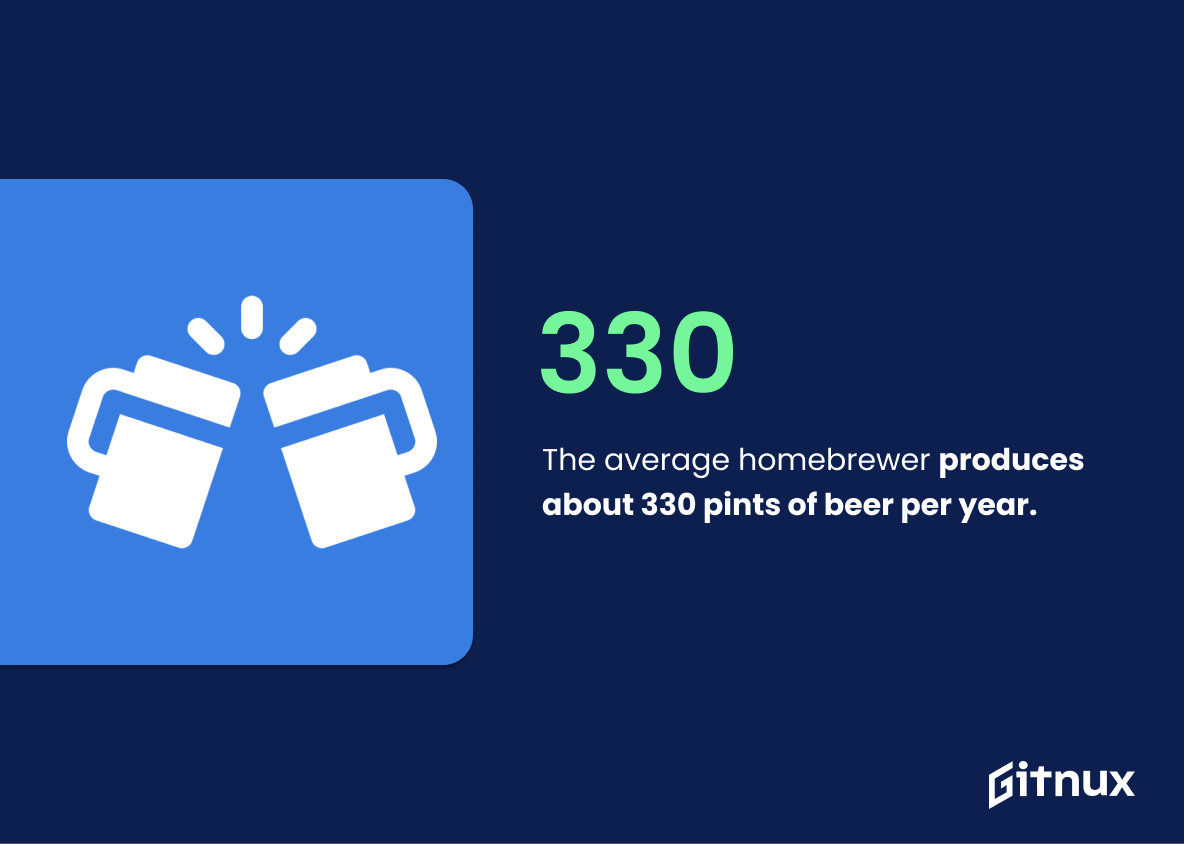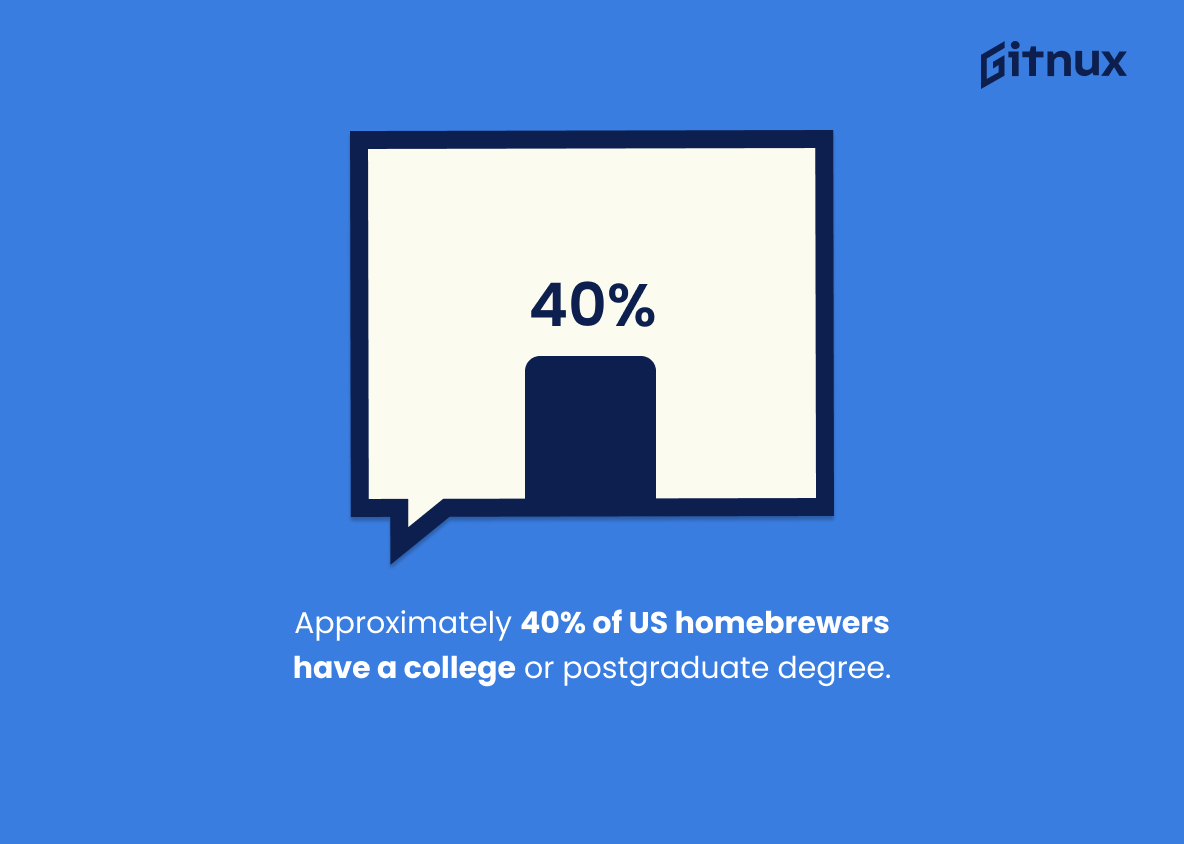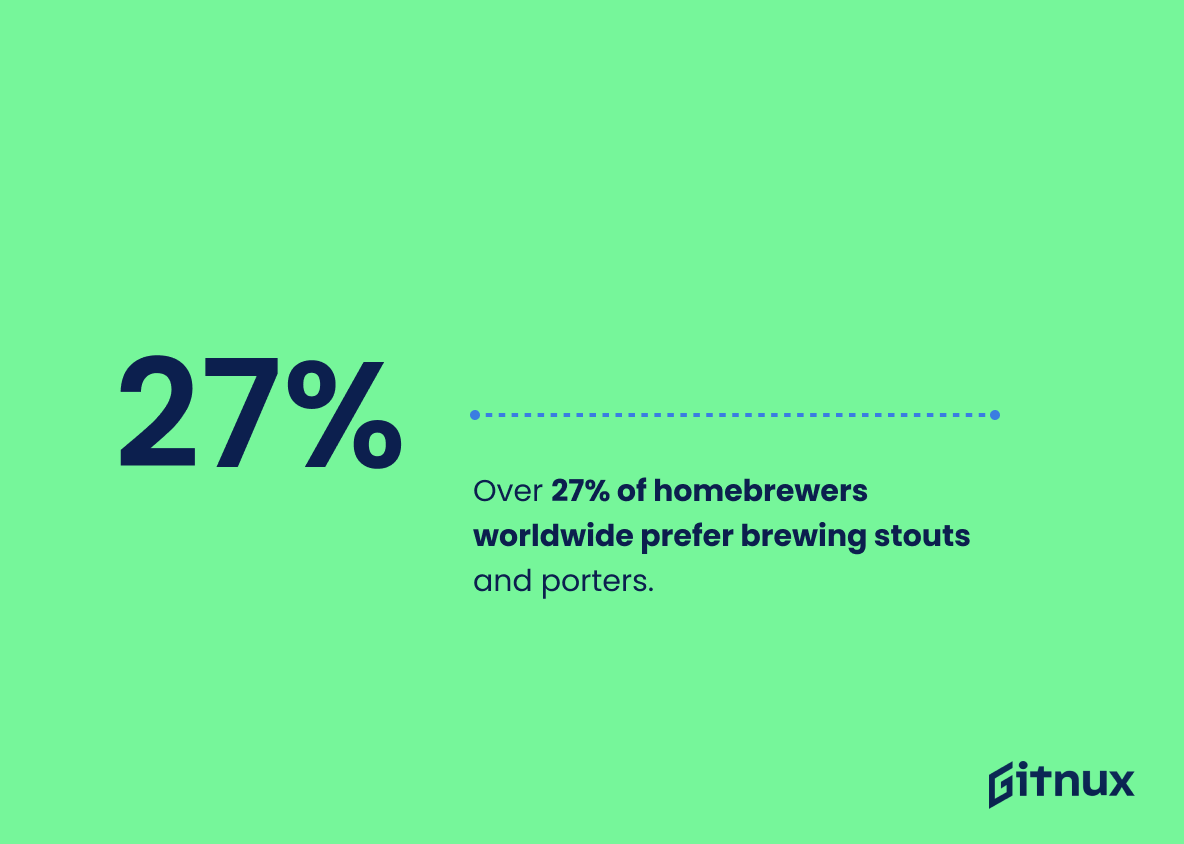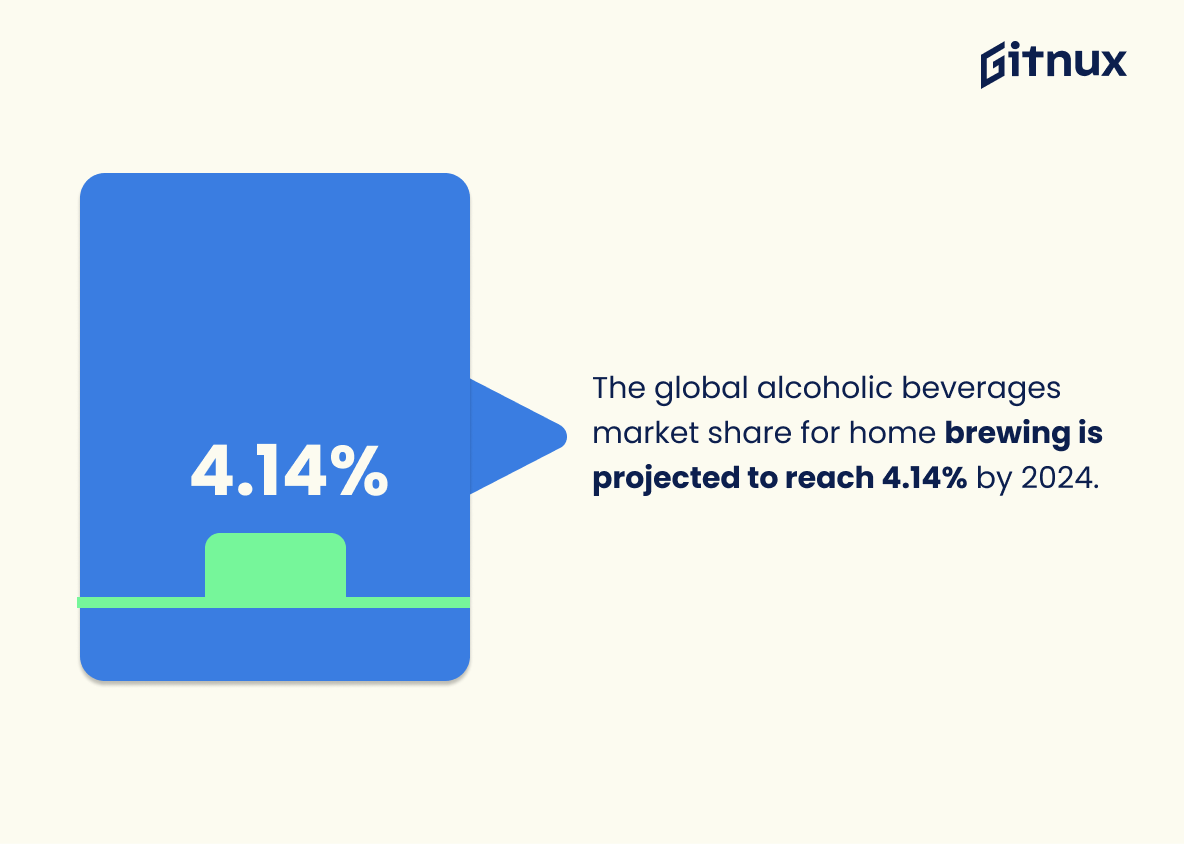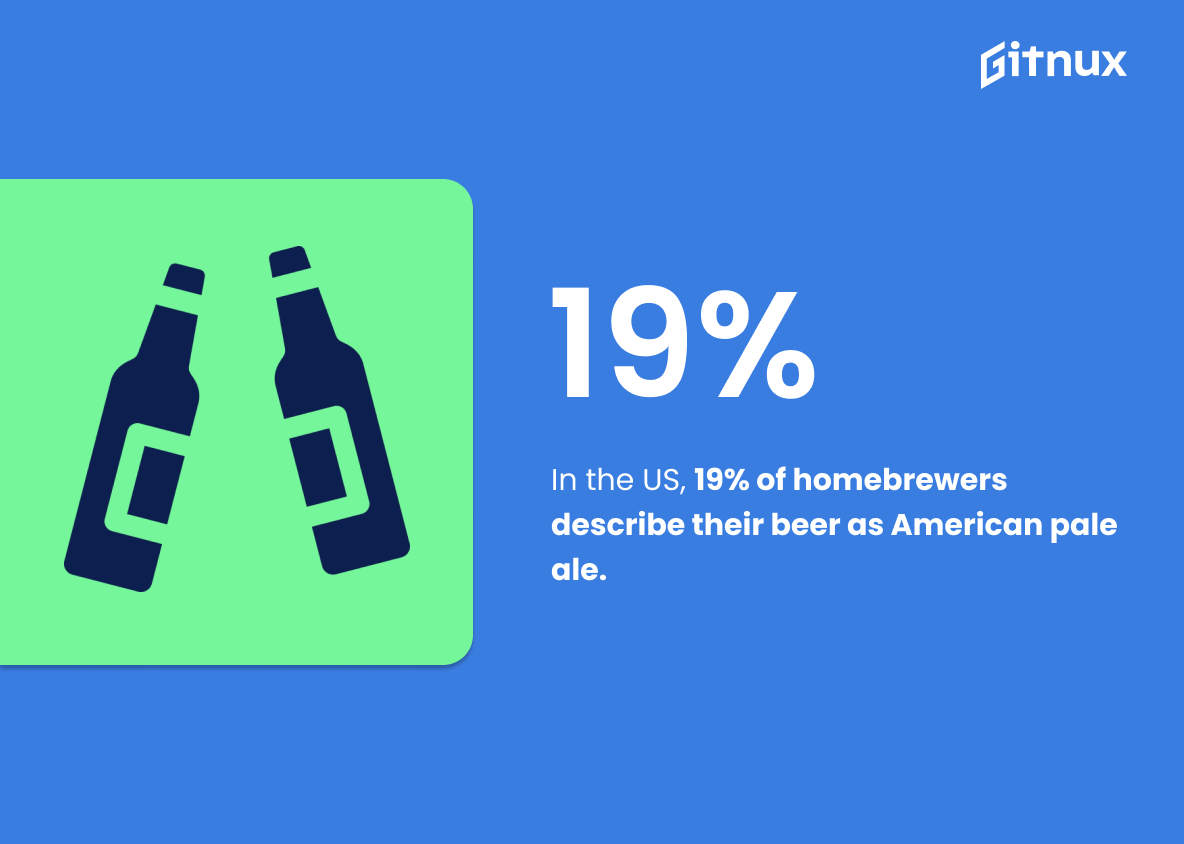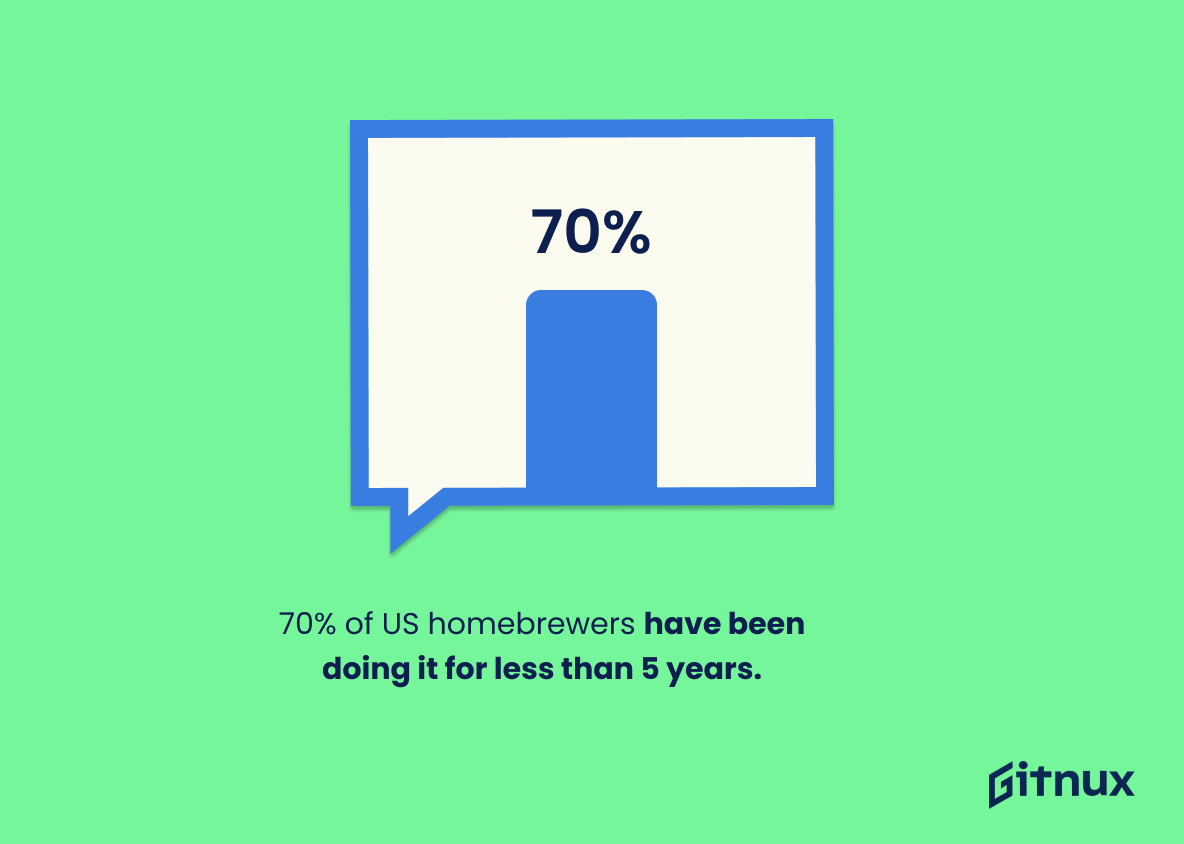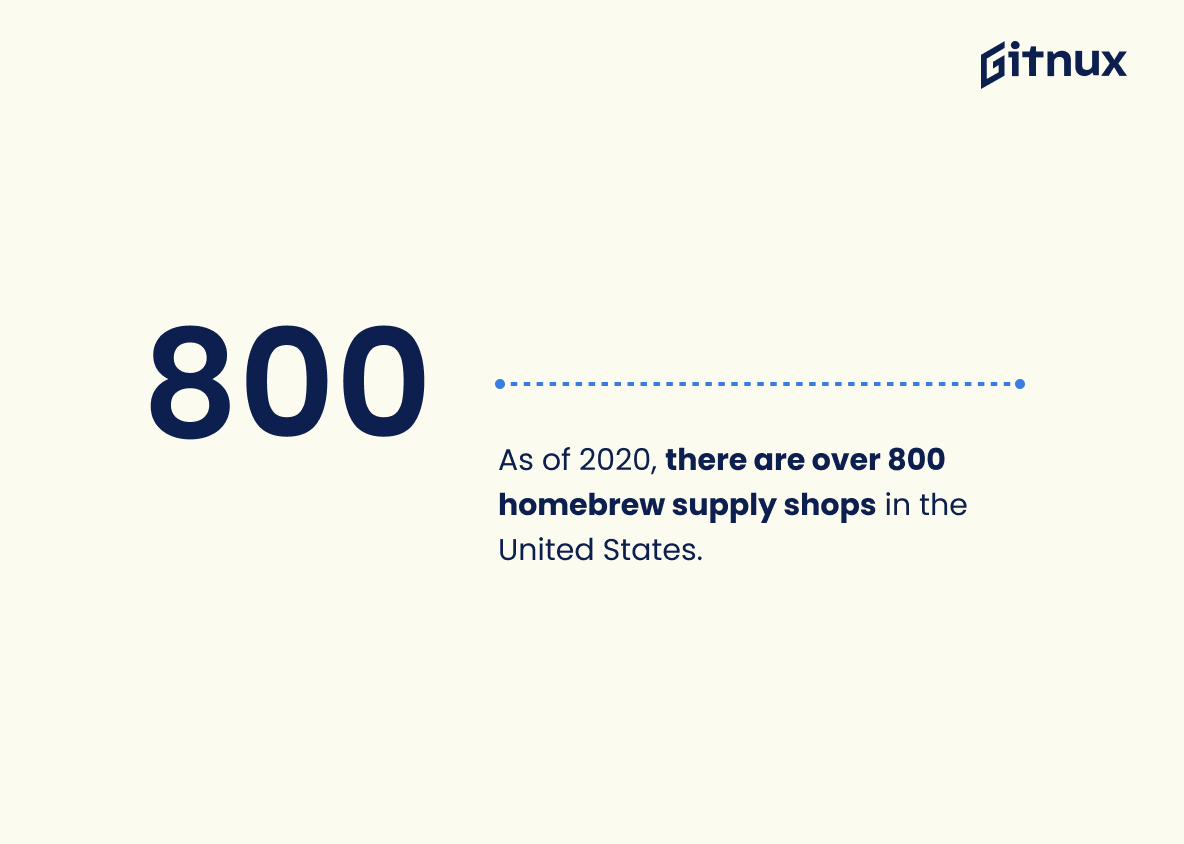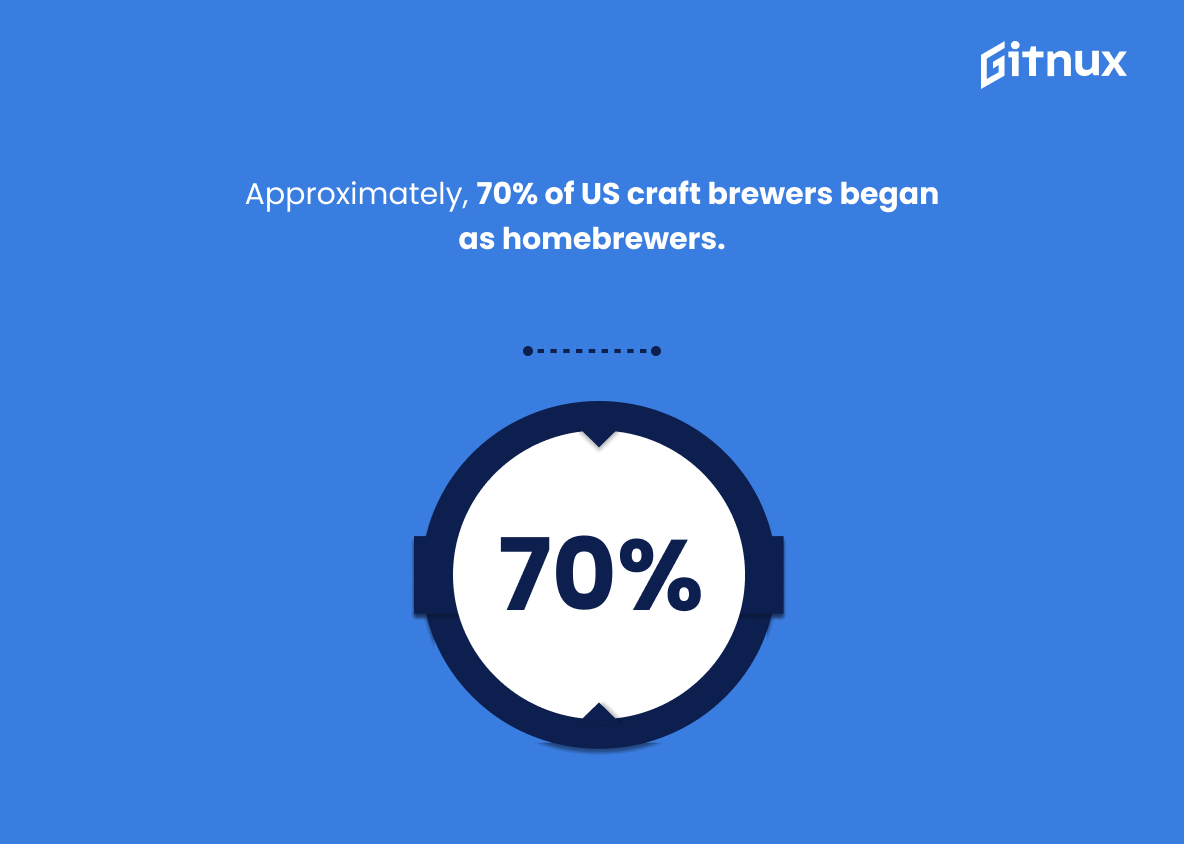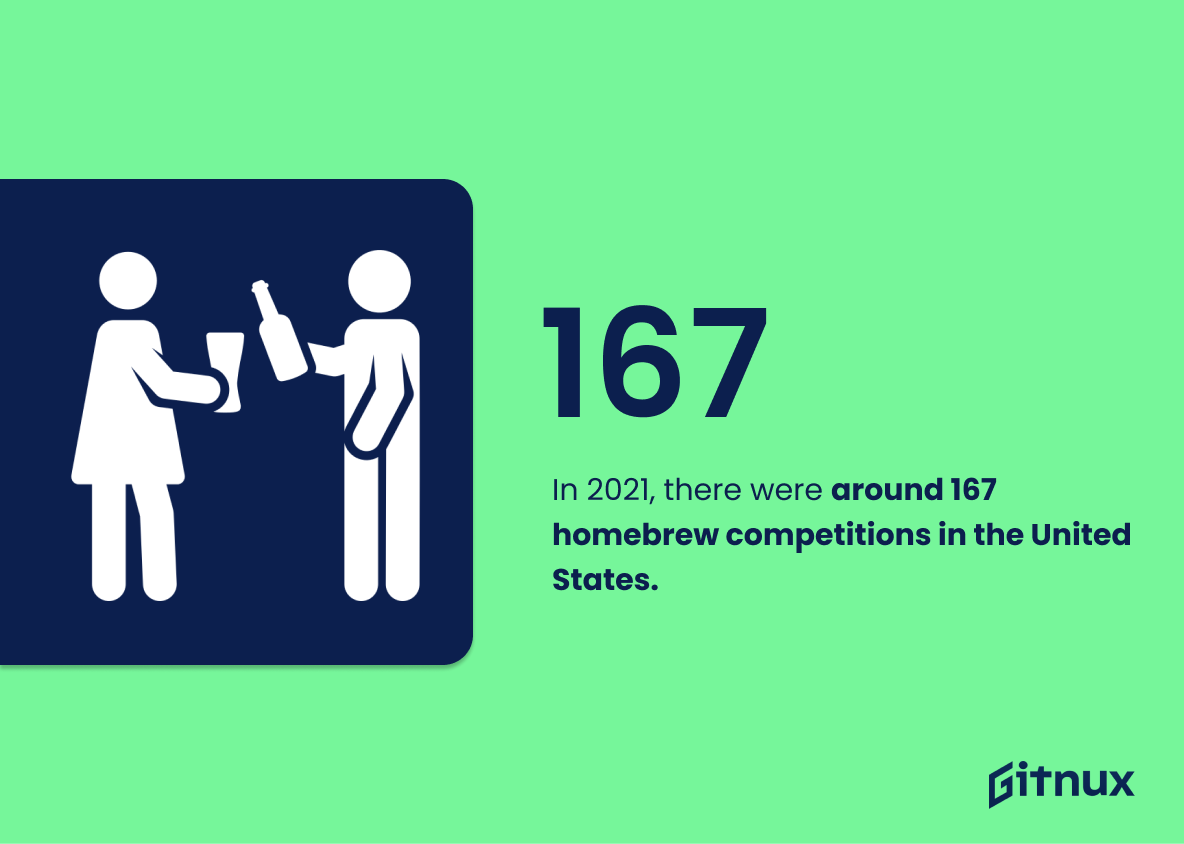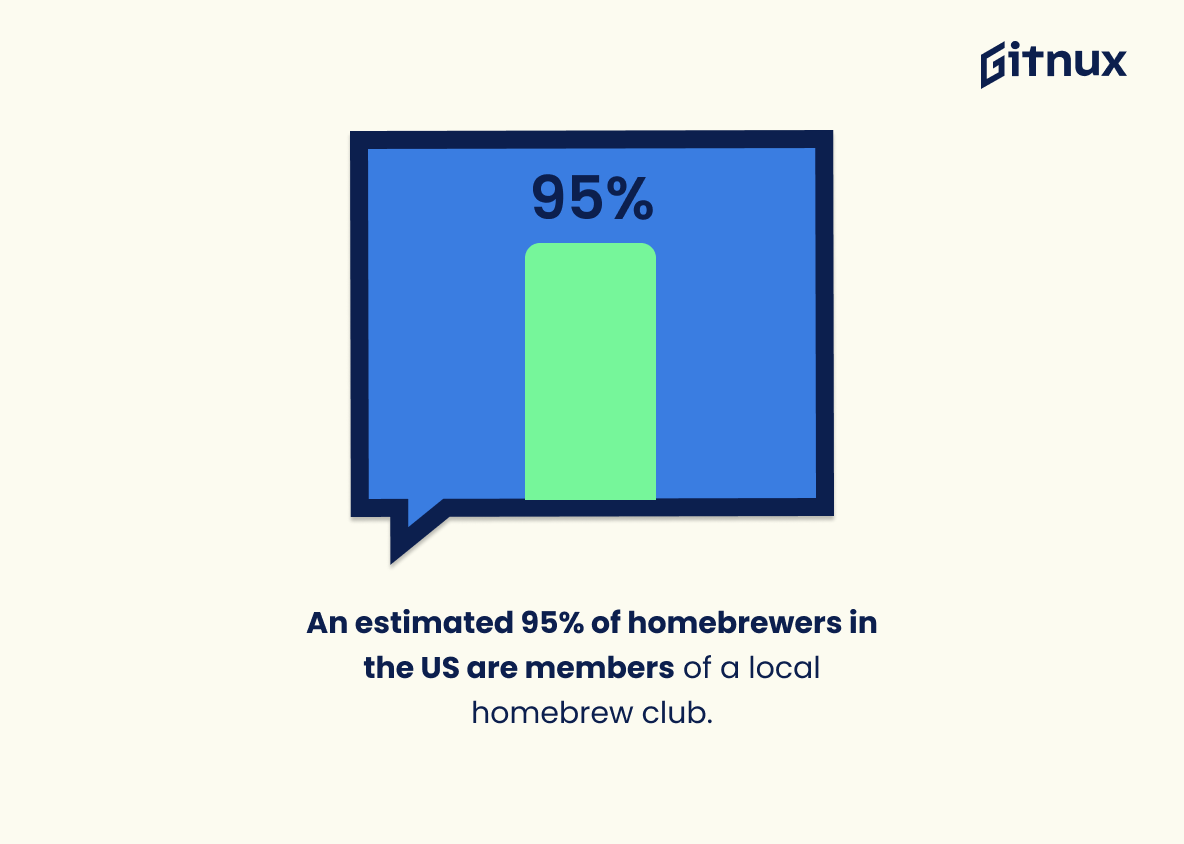Home brewing has become increasingly popular in recent years, and the statistics show that it is only growing. According to Grand View Research, the home brewing market is expected to grow at a compound annual growth rate of 8.5% from 2021 to 2028, reaching a revenue of $28.8 billion by 2028. The global home brewing machine market was valued at $1.89 billion in 2020 according to Market Research Future (MRF). In the United States alone there are over 1 million homebrewers estimated with an average production of 330 pints per year each – 13% have tried homebrewing at least once.
The American Homebrewers Association found that on average these brewers are 42 years old and 40% have college or postgraduate degrees; 85% identify as male while 70 percent have been doing this for less than 5 years with an average household income of $84,019 annually. There are currently 800+ supply shops across America and 28 percent use all-grain methods when making their beer – 19 percent prefer American pale ales specifically – 22 percent live in the West region while 95 percent belong to local clubs which host 167 competitions yearly. With such impressive numbers it’s no wonder why North America accounts for 30 %of the global alcoholic beverages market share projected reach 4 .14 %by 2024 .
This statistic is a testament to the increasing popularity of home brewing, indicating that the market is expected to expand significantly over the next seven years. With a projected revenue of $28.8 billion by 2028, it is clear that home brewing is becoming an increasingly lucrative industry. This statistic is an important piece of information for anyone interested in the home brewing market, as it provides an indication of the potential for growth and success in the industry.
In 2020, the global home brewing machine market was valued at $1.89 billion.
This statistic is a testament to the growing popularity of home brewing. It shows that the market for home brewing machines is thriving, indicating that more and more people are taking up the hobby. This is an important indicator of the trend of home brewing, and it is an important statistic to consider when discussing the state of the industry.
Home Brewing Statistics Overview
The average homebrewer produces about 330 pints of beer per year.
This statistic is a testament to the dedication and passion of homebrewers. It speaks to the sheer amount of time and effort that goes into crafting a quality beer, with the average homebrewer producing 330 pints of beer per year. This statistic is a reminder of the hard work and dedication that goes into the art of homebrewing.
Approximately 40% of US homebrewers have a college or postgraduate degree.
This statistic is a testament to the fact that home brewing is not just a hobby for the uneducated, but rather a craft that requires a certain level of knowledge and skill. It shows that home brewers are not only passionate about their craft, but also have the educational background to back it up. This statistic is a great reminder that home brewing is a serious endeavor that requires dedication and expertise.
Over 27% of homebrewers worldwide prefer brewing stouts and porters.
This statistic is significant in the context of a blog post about Home Brewing Statistics because it reveals the popularity of stouts and porters among homebrewers. It indicates that a large portion of homebrewers have a preference for these styles of beer, which could be due to the unique flavor profiles and complexity of these beers. This statistic could be used to inform brewers of the types of beers that are popular among homebrewers, and could be used to inspire brewers to experiment with different styles of beer.
The global alcoholic beverages market share for home brewing is projected to reach 4.14% by 2024.
This statistic is a testament to the growing popularity of home brewing, indicating that more and more people are taking up the hobby. It shows that the home brewing industry is expanding and becoming more accessible, which is great news for those who are interested in trying their hand at making their own beer, wine, or spirits. This statistic is a sign of the times, and it’s exciting to see the home brewing industry gaining traction.
North America is the leading market for home brewing, accounting for approximately 30.3% of the global market in 2020.
This statistic is a testament to the popularity of home brewing in North America, highlighting the region’s significant contribution to the global market. It is a reminder of the immense potential of the home brewing industry and the potential for further growth in the region. This statistic is an important factor to consider when discussing the current state of the home brewing industry and its future prospects.
In the US, 19% of homebrewers describe their beer as American pale ale.
This statistic is significant in the context of home brewing statistics because it demonstrates the popularity of American pale ale among homebrewers. It shows that this style of beer is a favorite among those who brew their own beer, and it may be an indication of the growing trend of homebrewers in the US. Additionally, it may be an indication of the quality of American pale ales, as homebrewers are likely to be more discerning when it comes to the beer they make.
70% of US homebrewers have been doing it for less than 5 years.
This statistic is indicative of the growing popularity of home brewing in the US. It suggests that the hobby is becoming increasingly popular, with more and more people taking up the craft in recent years. This could be due to the increasing availability of home brewing supplies, the rise of craft beer culture, or the desire to create unique and interesting beers. This statistic is important to consider when discussing the current state of home brewing in the US, as it provides insight into the growing trend of home brewing.
As of 2020, there are over 800 homebrew supply shops in the United States.
This statistic is a testament to the growing popularity of home brewing in the United States. With over 800 homebrew supply shops, it is clear that home brewing is becoming an increasingly popular hobby and that more and more people are taking up the craft. This statistic is a great indicator of the current state of the home brewing industry and provides insight into the potential for growth in the future.
In the US, 28% of homebrewers use all-grain brewing methods.
This statistic is significant in the context of home brewing statistics as it indicates that a large portion of homebrewers are taking the extra step to create a more complex and flavorful beer. All-grain brewing methods require more time and effort, but the results are often worth it. This statistic shows that many homebrewers are willing to put in the extra effort to make a better beer.
Approximately, 70% of US craft brewers began as homebrewers.
This statistic is a testament to the power of homebrewing as a gateway to the craft brewing industry. It speaks to the potential of homebrewing to be a launching pad for aspiring brewers to turn their passion into a career. It also highlights the importance of homebrewing in the craft beer industry, as it serves as a source of inspiration and innovation for many brewers.
In 2021, there were around 167 homebrew competitions in the United States.
This statistic is a testament to the growing popularity of home brewing in the United States. It shows that more and more people are taking up the hobby and participating in homebrew competitions, which is a great sign for the industry. It also indicates that the home brewing industry is thriving and that there is a strong demand for homebrewed beer. This statistic is an important indicator of the health of the home brewing industry and provides valuable insight into the current state of the industry.
An estimated 95% of homebrewers in the US are members of a local homebrew club.
This statistic is a testament to the strong sense of community that exists among homebrewers in the US. It speaks to the fact that homebrewers are not only passionate about their craft, but also about connecting with and supporting one another. This statistic is indicative of the camaraderie and support that exists among homebrewers, and it is an important part of the culture of homebrewing.
Conclusion
The statistics presented in this blog post demonstrate the growing popularity of home brewing around the world. The global market for home brewing is expected to reach a revenue of $28.8 billion by 2028, and North America currently accounts for 30.3% of that market share. In 2020, 1.1 million homebrewers were estimated in the United States alone, with an average age of 42 years old and 85% being male. Homebrewing has become increasingly popular among college-educated individuals as well, with 40% having at least a college degree or higher education level attained.
Homebrewers produce an average 330 pints per year and prefer stouts/porters over other styles (27%). Additionally, 70% have been doing it for less than 5 years while 95% are members of local clubs – indicating its increasing appeal amongst hobbyists worldwide. With 800+ supply shops across US states providing necessary equipment & ingredients needed to brew beer at home; competitions held throughout 2021 further encouraging enthusiasts; American pale ale being one preferred style brewed by 19%; along with households earning on average $84k annually – all these factors contribute towards making homebrewing more accessible & enjoyable than ever before.
References
0. – https://www.www.grandviewresearch.com
1. – https://www.beerandbrewing.com
2. – https://www.www.prnewswire.com
3. – https://www.www.telegraph.co.uk
4. – https://www.homebrewacademy.com
5. – https://www.www.marketresearchfuture.com
6. – https://www.www.bjcp.org
7. – https://www.www.brewersassociation.org
8. – https://www.www.homebrewersassociation.org
